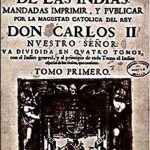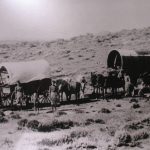It is said that in the early part of the thirteenth century, English fish dealers working on the long eastern coast at places like Grimsby and Yarmouth were in a sad state of near-bankruptcy because their regular customers from the Baltic Sea and Russia had ceased to call with their fish. The populace had to make do with herrings, which came from the North Sea and in abundance. But what had happened to the Russian fishermen?
A new and dreadful power has arisen in the East, menacing most Christians and Moslems. King Henry III had received envoys begging for help from the supposed enemies of all Christendom, the Moslems, and also from Islamic fanatics such as the Assassins (Hashasheens: one wonders if the ‘Hash’ part of their official name had any significance?). The Saracens sent ambassadors too.
There had been rumours about this new and raging power for years. Some chroniclers associated it (showing a certain optimism) with the legend of ‘Prester John’, an imaginary Eastern king who would destroy Islam. Monkish historians wrote of the Antichrist and the force from Hell led by a demon called ‘Tartarus’. The Last Judgment, they murmured ominously, was on its way.
Well of course it was the Mongols! They were ‘the Devil’s Horsemen’ from Eastern Asia who had conquered half the known world but they did not know about this in Grimsby or Yarmouth, communications being less sophisticated than today’s. Their rise and expansion started with a Prince Temujin, a.k.a. Genghis Khan (q.v., khan is simply another word for King, Kaiser etc.). This fellow announced to his followers that he was destined to be ‘an Eternal Ruler’. He might have been too; he overcame rival tribes and nomadic warriors and created what was then a devastating military force, much aided by the common people’s fear and ignorance. The armies of the Khan were equipped with a double curved Mongol bow made of horn and wood, which people whispered was stronger and had a longer range than even the famed English longbow.
The Tartar soldiers carried sixty arrows each, including some with armour-piercing and/or incendiary heads. Others, which whistled as they shot through the air, were used for signalling. Troops rode stocky, tough and tireless mountain ponies, a dozen proved for each rider in or approaching battle. Using this system, the Khan’s riders could move across country, steppe or mountain at astonishing speed, sometime covering more than a hundred miles per day.
Not far behind trundled the siege-engines, dragged by slaves, designed and directed by the Chinese (he had taken Pekin in 1215), and used for catapulting rocks or tautly-packed flaming bales of straw at or over fortifications which might have stood in the way. The Universal Ruler was not to be halted!
Ghengis Khan was a terrifying figure, athletic (until he grew fat), and tall. He was said to be equipped with ‘cat’s eyes’. He was utterly convinced that it was his divine mission to conquer the world, and intended to do so. But he was also a butcher of innocent men, women and children. Contemporary illustrations show the young being roasted on stakes killed and eaten on campaign roasted on stakes. He was illiterate, and thus unable to read about himself in the innumerable accounts of his exploits, many of which have survived. Extraordinary enough, Genghis Khan respected all holy men of whatever race or creed, though he was little more than an intelligent savage. The Mongols set an example of religious toleration unique in the medieval world. They respected Christian, Moslem, Buddhist and Jewish beliefs.
He died at sixty-nine years old when the empire he had created by fire and sword stretched from the Pacific shores to the northern parts of the Black Sea. He was master of
Samarkand and Iran and parts of China. He died in his bed, leaving his grandson Kubla (q.v.) to complete the conquest of China.









Leave A Comment